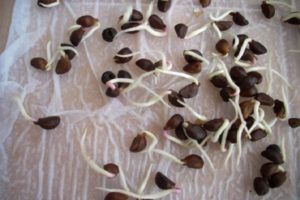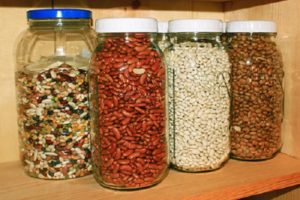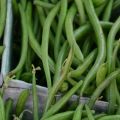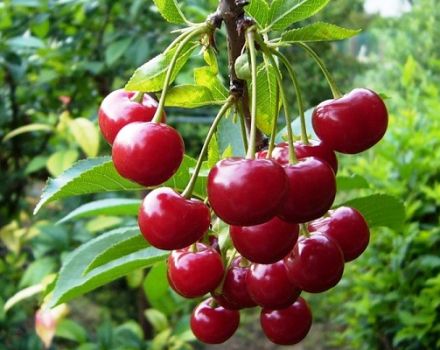How to properly grow beans at home, step by step for beginners
A product loved by many can be obtained without much hassle, without having a summer cottage. You just need to know how beans are grown in a house or apartment. To plant this culture, it is enough to acquire small containers - containers, boxes, pots, which will conveniently fit on the loggia, balcony or windowsill. Beautifully flowering plants will not only provide tasty beans, but also serve as a decorative element.
Content
- 1 How to choose the right variety of beans for your home
- 2 Is it possible at home to create conditions suitable for beans
- 3 Seed preparation and sowing
- 4 Soil preparation for planting seeds
- 5 Planting stages
- 6 Bean care at home
- 7 Optimal light conditions
- 8 How and how to feed beans
- 9 Diseases and pests of beans
- 10 Harvesting the first harvest
How to choose the right variety of beans for your home
If you decide to plant beans at home, first you need to decide on the choice of the variety. There are several options, the best of which are the asparagus and ornamental varieties. Bush beans are also noteworthy due to their short growing season, fast ripening and compact size. The characteristics of early bush varieties allow them to be grown in boxes without much hassle. Popular are Scuba and Homestead Green. For home cultivation, hybrids are recommended that have immunity against diseases and insect pests. Decorative species give out large and beautiful multi-colored beans, which are unsuitable for food, but are used for further landscaping of balconies.
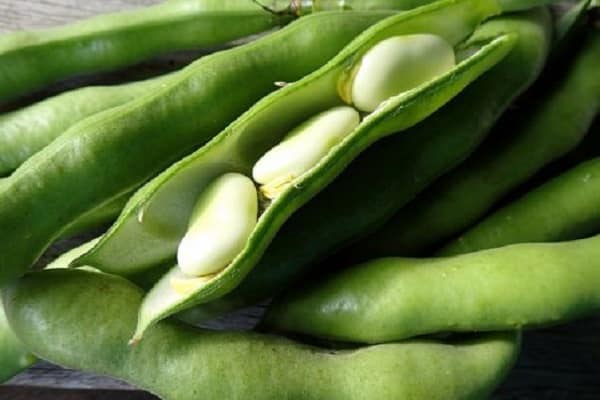
The early ripening is distinguished by excellent fruiting in the apartment black Eyed Peas:
- The oil king. Delicate, tubular, large pods are removed no earlier than two months later and used for food fresh or as a component of blanks;
- Caramel. A variety with increased resistance to legume diseases. Produces a harvest of sugar pods in two months;
- Saks 615. A compact variety with small, tubular pods, prized for its high nutrient content and lack of coarse fibers.
When a curly look is preferred, you should not choose too climbing varieties that shade the windows as much as possible. You can recommend Draping, Rumba, Violetta. Pinching is capable of stopping the growth of a vine, which will bring the moment of the beginning of fruiting closer. Climbing plants are fixed on a trellis or cone-shaped wooden tripod. It is enough for Kustov to install a low support.
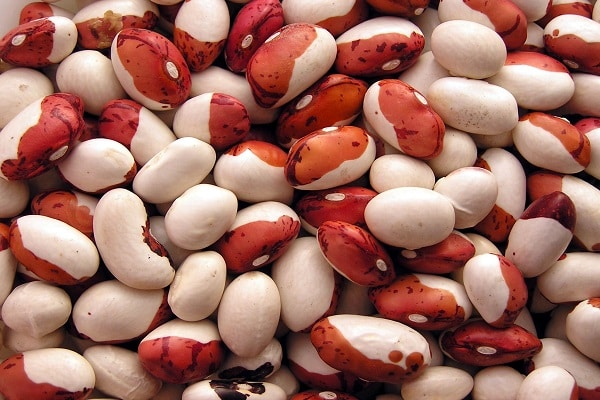
Peeling varieties are planted in order to obtain dry grains, home conditions are not suitable for this - what they sowed is what they harvested.
For those who first decided to plant beans at home, it is best to purchase several varieties for testing and plant 3-4 seeds each.
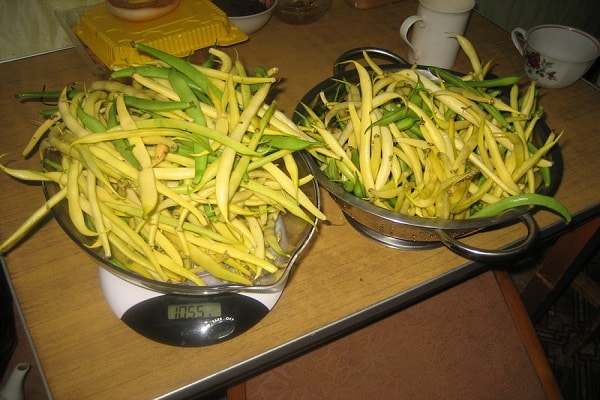
Is it possible at home to create conditions suitable for beans
The plant needs a short daylight hours - no more than 12 hours, this is necessary for the formation of flower buds. If it is possible to provide beans grown on the windowsill, such conditions, the harvest will be early and plentiful. The same applies to planting culture on the balcony. This parameter loses its relevance with the onset of fruiting.
To grow beans in an apartment, prepare loamy or sandy loam soil and warm it up to +12 degrees. Breeding beans at home will not cause problems, in particular, thanks to the self-pollinating flowers.
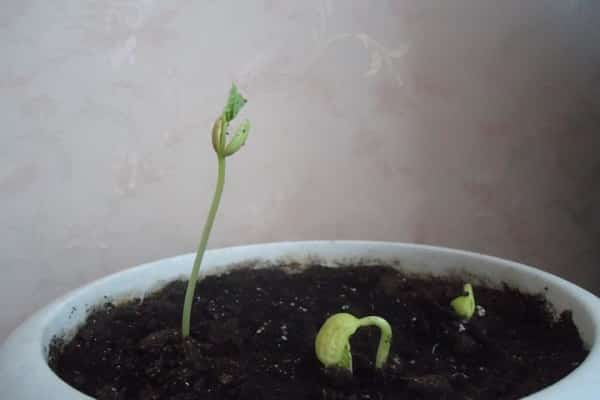
Seed preparation and sowing
Seed should be planted after careful selection and processing. There are criteria for the selection of seeds, after which full specimens remain. The grains should be smooth, with a shiny surface, without traces of pests, dark spots, mold, flabbiness, emptiness. After visual inspection, the beans are filled with salted water.
Floated seeds are discarded. Dry seeds have a hard shell that retards the emergence of seedlings.
The technology of processing beans seeds is as follows: the seed material is soaked for a day in warm water, which needs to be replaced four times. Growth stimulants play a good role. For the prevention of ailments of seedlings, a weak solution of potassium permanganate, insecticide or fungicide is suitable.

After that, the seeds are placed in a damp cloth until germination. At the same time, the air temperature is maintained within +25 degrees. As soon as the first shoots hatch, the seeds are planted in the ground, filled in a container with a 5 cm deepening.The soil mixture must be watered and laid out bean seeds roots down or sideways, with an interval of 15-20 cm.
The length of the day required for growing beans is from mid-February to mid-March. For planting on the windowsill, seeds are prepared in February. On a glazed balcony, beans are sown in mid-May, on an open balcony - at the end of May.
A heat-loving culture is afraid of frost. As an adult, it can withstand a short-term temperature drop of at least -3 degrees.
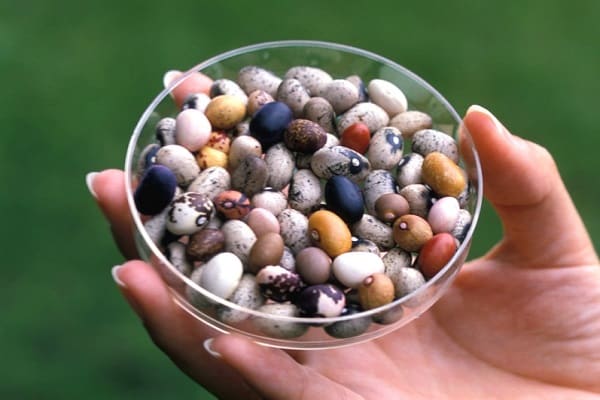
Soil preparation for planting seeds
The rapid growth of beans allows you to grow the plant without picking, in a constant container. Each plant will need at least 3 liters of soil. Pots should be 20 cm tall due to poor root development. A tight container will make the beans weak and lean.
If it is not possible to equip the containers with drainage holes, a layer of expanded clay is poured onto the bottom. You can buy universal ready-made soil or prepare the soil mixture yourself. To do this, take in equal amounts of humus and sod land, where 200 g of wood ash is added. The use of acidic soil is unacceptable. Deoxidation is carried out with dolomite flour, ash, chalk or lime to pH 6-6.5.

Planting stages
Indoors - balcony, loggia - it is recommended to plant beans at the very beginning of May. The technology of growing in an apartment differs in terms of timing: they begin planting in March. A step-by-step scheme for planting this vegetable crop is proposed.
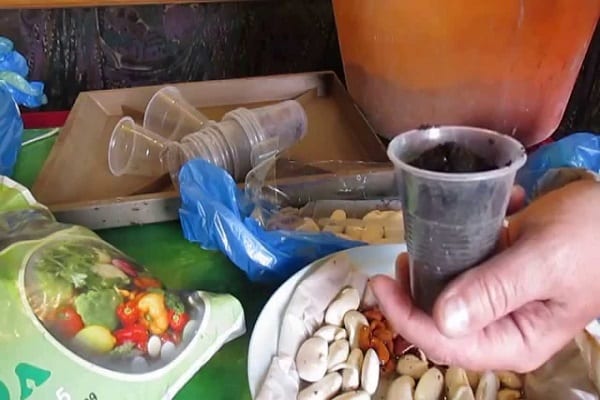
Stage 1
Seeds are allowed to be planted in the ground dry or already germinated. In the case of choosing the second option, the seed is placed in a gauze bag and dropped into a container with warm water, which should be added as it evaporates. The first sprouts will indicate the right time to plant the beans.
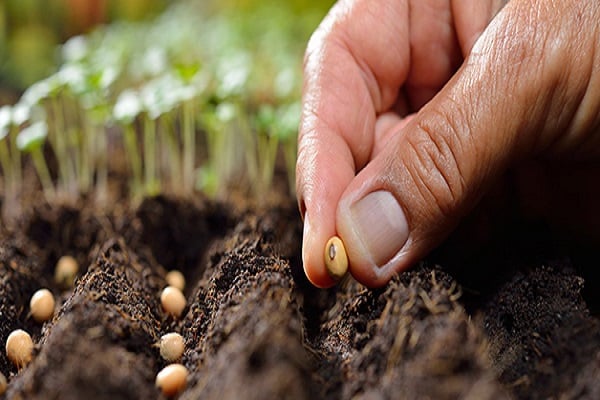
Stage 2
We proceed to the choice of a container for planting plants: bush varieties need at least 3 liters of soil, curly ones - 35 liters. Having picked up a suitable box, container or pot, we fill it with the soil mixture, the preparation of which was mentioned above.
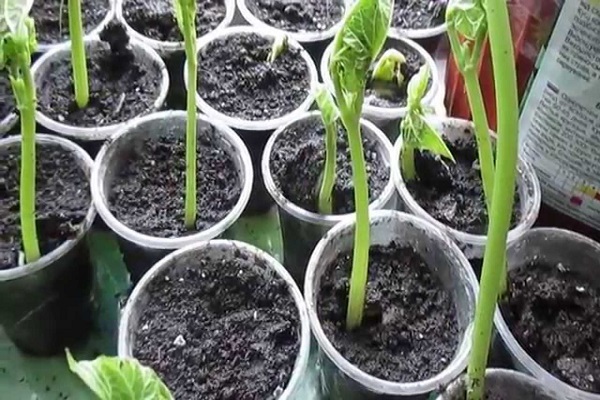
Stage 3: Disembarkation
At this stage, there are no problems, it is enough to follow simple rules:
- Before planting dry or soaked seeds, it is recommended to spill the soil with hot water or manganese solution. The beans are laid out in the pits, maintaining a distance of 10 cm. Sprouted seeds are recommended to be laid on their side, regardless of the location of the sprout, otherwise it is difficult to determine the correct location of the grain. However, nothing terrible will happen if the placement is incorrect, since the seedlings hatch in any case, rushing towards the light.
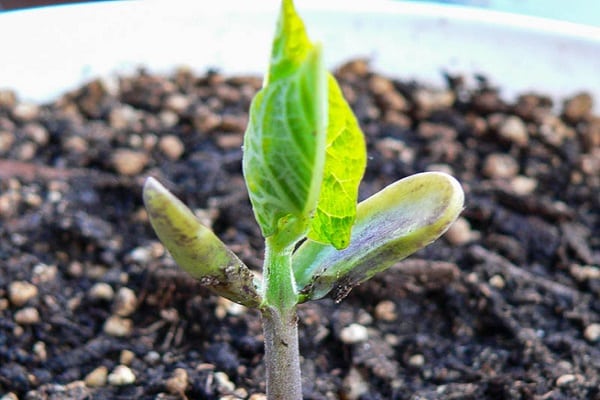
The optimal planting time is May. Beans germinate within 5-7 days, start flowering in a month and a half, and the first harvest should be expected after a few weeks.
Combined cultivation is considered a good option:
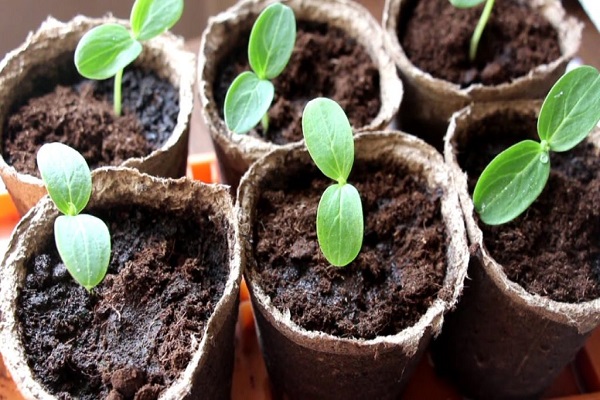
- Seedlings grown indoors are taken out to a balcony or loggia with the establishment of warm weather. Sowing is carried out a month before the disappearance of the threat of night frosts.
- Early ripening varieties, sown in February, are grown on the windowsill until fruiting. After harvesting, the containers are emptied and placed on the balcony for planting new plants.
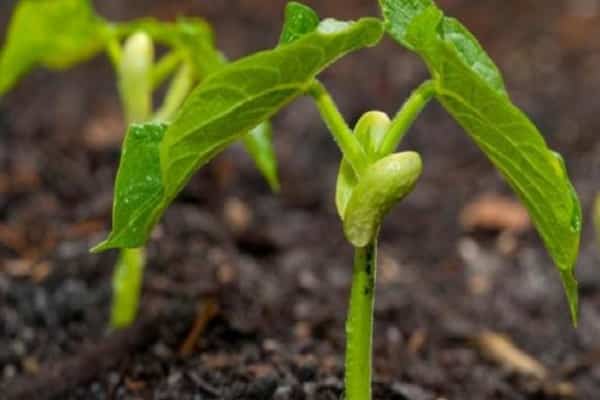
Bean care at home
Watering the plants is carried out as the top layer of the soil dries up. On a loggia or balcony, the frequency of irrigation depends on the weather conditions: in the heat, the number of irrigations reaches two per day. To avoid the occurrence of fungi, you should try not to get water on the leaves. The best time to moisten the soil is in the morning. With the appearance of two pairs of leaves, watering is stopped and resumed with the beginning of flowering.
To get a good harvest on an unglazed loggia, bean plantings must be protected from rain, preventing stagnation of water in containers. For this purpose, the containers are moved under the roof, inside the balcony.
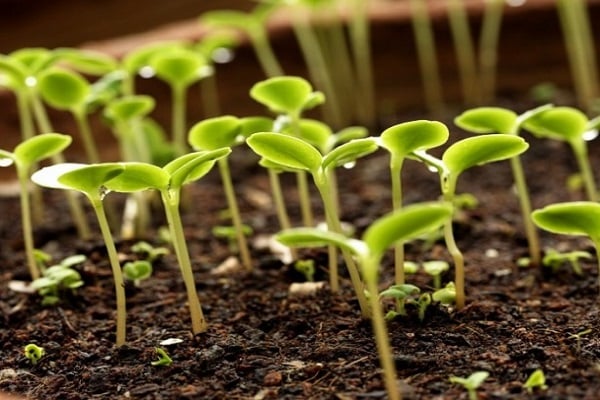
Optimal light conditions
The culture does not tolerate shading, so a well-lit place is selected for planting or additional lighting is arranged. However, it must be remembered that the daylight hours before the start of fruiting should be short, no more than 12 hours.
When growing beans on a windowsill during the winter months, the boxes are placed on the south side. If this is not possible, supplementary lighting with a phytolamp is placed. In late spring and summer, the culture feels great on the windows of the western and eastern orientation.
An experiment is recommended to determine the difference in yield for different daylight hours. Young plants of the same variety, grown with the same care, are divided into two groups. The first will develop in a short day, the second in natural light.

What and how to feed beans
The first feeding must be applied in the phase of appearance of true leaves and repeated twice a month. During the growing period, the plant needs organic fertilizers, but at home it is impossible to use the droppings and infusion of mullein due to an unpleasant, pungent smell. There is only one way out - the regular addition of humus while mixing with the soil. The introduction of such dressings ends in the budding phase. Now beans require potassium and trace elements, the role of which will be played by wood ash. The earth is powdered from above, loosened and watered.
For feeding plants cultivated indoors, a natural odorless fertilizer has been developed - horse manure extract.

Diseases and pests of beans
Home plantings are not protected from the appearance of diseases and pests. The most dangerous is the bean weevil. In the presence of indoor plants, thrips, spider mites, and aphids can spread on bean bushes. Indoors, pest control should be organized with the help of biological preparations, as the safest for the human body and pets.
Freezing of dry seeds helps to get rid of caryopsis for two days in a freezer at a temperature not lower than -15 degrees.
Beans are affected by bacteriosis and viral anthracnose. Viral infections are incurable, so take care of preventive measures in the form of spraying plants with special preparations twice before flowering.
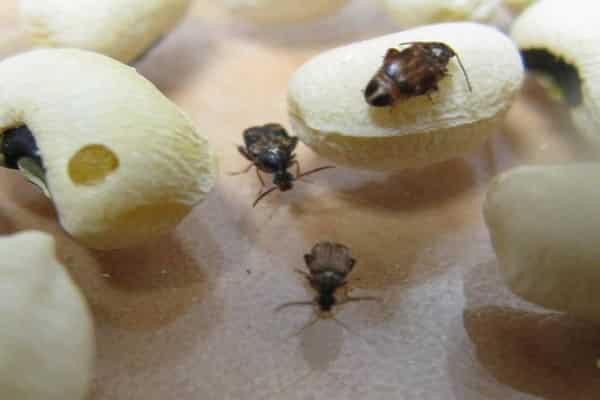
Harvesting the first harvest
The ripe pods are immediately used for food. When harvesting your own seed, the fruits are left on the plant until they are fully ripe. Growing beans at home cannot be called large-scale, but a dozen bushes will provide the owner of the plantations with a crop two months after sowing. Climbing beans and five bushes are enough. Later fruiting occurs due to cool weather.
An unpretentious culture does not require specific skills and experience to grow at home. Bean development occurs even in cramped conditions and lack of lighting. Creating favorable conditions will provide you with no less abundant harvest than when planting in open ground. Important agrotechnical techniques: a sufficient amount of soil, the organization of the lighting regime, competent watering and fertilization.

